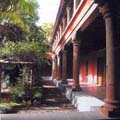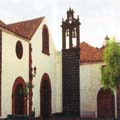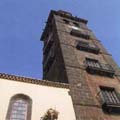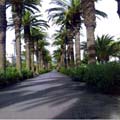History.
 Its name originated from a small lake that used to exist where the population settlement is today.
Its name originated from a small lake that used to exist where the population settlement is today.
In 1496 the city is founded with the settlement of soldiers and civilians in the area surrounding the Church of La Concepción where, for the first time, the Festivity of the Corpus was celebrated. Since 1497 its Chapter House was active, following its own orders from the first moment. In 1500 the construction of other buildings in this place was prohibited, and it was ordered to build them from the Santispíritu Hospital towards Abajo.
After the island’s conquest and up until the XIX century, it became its first capital and centre of politic and economic power, although the 1706 eruption, that destroyed the harbour of Garachico, caused a slight decline that contrasted with the growing splendour of Santa Cruz de Tenerife.
 The title of City was granted in 1510 and in 1534 is converted by royal pragmatics in the Very Noble, Illustrate, Loyal and Faithful City of San Cristóbal de La Laguna (La Muy Noble, Ilustre, Leal y Fiel Ciudad de San Cristóbal de La Laguna).
The title of City was granted in 1510 and in 1534 is converted by royal pragmatics in the Very Noble, Illustrate, Loyal and Faithful City of San Cristóbal de La Laguna (La Muy Noble, Ilustre, Leal y Fiel Ciudad de San Cristóbal de La Laguna).
From the middle of the XVI century, the urban city area was defined and gradually established.
Due to its historical and artistic value, it was declared Humanity’s Patrimony in 1999.
The city is outstanding in three aspects, such as Adrián Alemán points out in his Guide of La Laguna (1986).
First, in the military aspect, the army is present with men who participated in the conquest.
In 1723 the General Captaincy of the Islands was transferred here.
Second, as a religious centre of the island. Many temples joined the first parishes, specially religious convents: Augustans, Dominicans, Jesuits, Blemits and feminine orders founded their convents in La Laguna. This importance ends in 1818-1819 with the creation of the Nivariense Dioceses, that establishes its headquarters in the city.
Third, in education, since its beginnings it had a school, enlarged with different academic grades y with studies supplied by the convents until in 1927 the University of San Fernando de La Laguna was founded.
 Places of Historical Interest
Places of Historical Interest
Guildhall of San Cristóbal de la Laguna
Long Road
Claude Bigot House
Corregidor House
It was the seat of the ancient Chapter House of the Island of Tenerife and today is occupied by the Guildhall dependencies.
Jesuit’s House
Montañés House
Mustelier House
 Peraza de Ayala House
Peraza de Ayala House
Porlier House
Román House
Temple of Cruz de Moure
Temple of las Mercedes
Temple of San Bartolomé de Geneto
Temple of San Cristóbal
Temple of San Juan Bautista
Temple of San Miguel de Geneto
Temple of San Roque
Cañizares Fountain
Market or Recova
Ancient Town Barn
Placete Rodríguez de Azero.
Present day casino